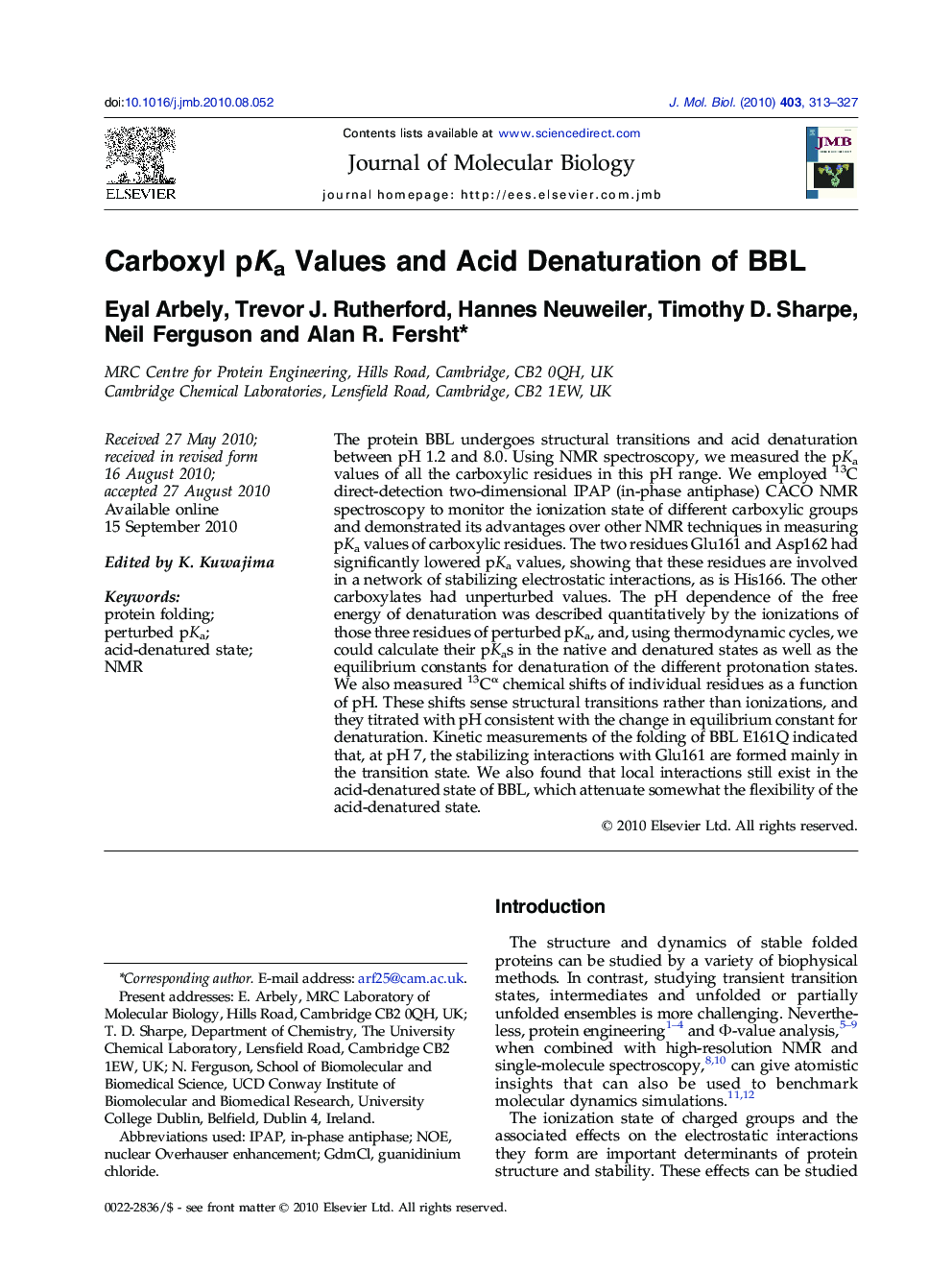| Article ID | Journal | Published Year | Pages | File Type |
|---|---|---|---|---|
| 2185756 | Journal of Molecular Biology | 2010 | 15 Pages |
The protein BBL undergoes structural transitions and acid denaturation between pH 1.2 and 8.0. Using NMR spectroscopy, we measured the pKa values of all the carboxylic residues in this pH range. We employed 13C direct-detection two-dimensional IPAP (in-phase antiphase) CACO NMR spectroscopy to monitor the ionization state of different carboxylic groups and demonstrated its advantages over other NMR techniques in measuring pKa values of carboxylic residues. The two residues Glu161 and Asp162 had significantly lowered pKa values, showing that these residues are involved in a network of stabilizing electrostatic interactions, as is His166. The other carboxylates had unperturbed values. The pH dependence of the free energy of denaturation was described quantitatively by the ionizations of those three residues of perturbed pKa, and, using thermodynamic cycles, we could calculate their pKas in the native and denatured states as well as the equilibrium constants for denaturation of the different protonation states. We also measured 13Cα chemical shifts of individual residues as a function of pH. These shifts sense structural transitions rather than ionizations, and they titrated with pH consistent with the change in equilibrium constant for denaturation. Kinetic measurements of the folding of BBL E161Q indicated that, at pH 7, the stabilizing interactions with Glu161 are formed mainly in the transition state. We also found that local interactions still exist in the acid-denatured state of BBL, which attenuate somewhat the flexibility of the acid-denatured state.
